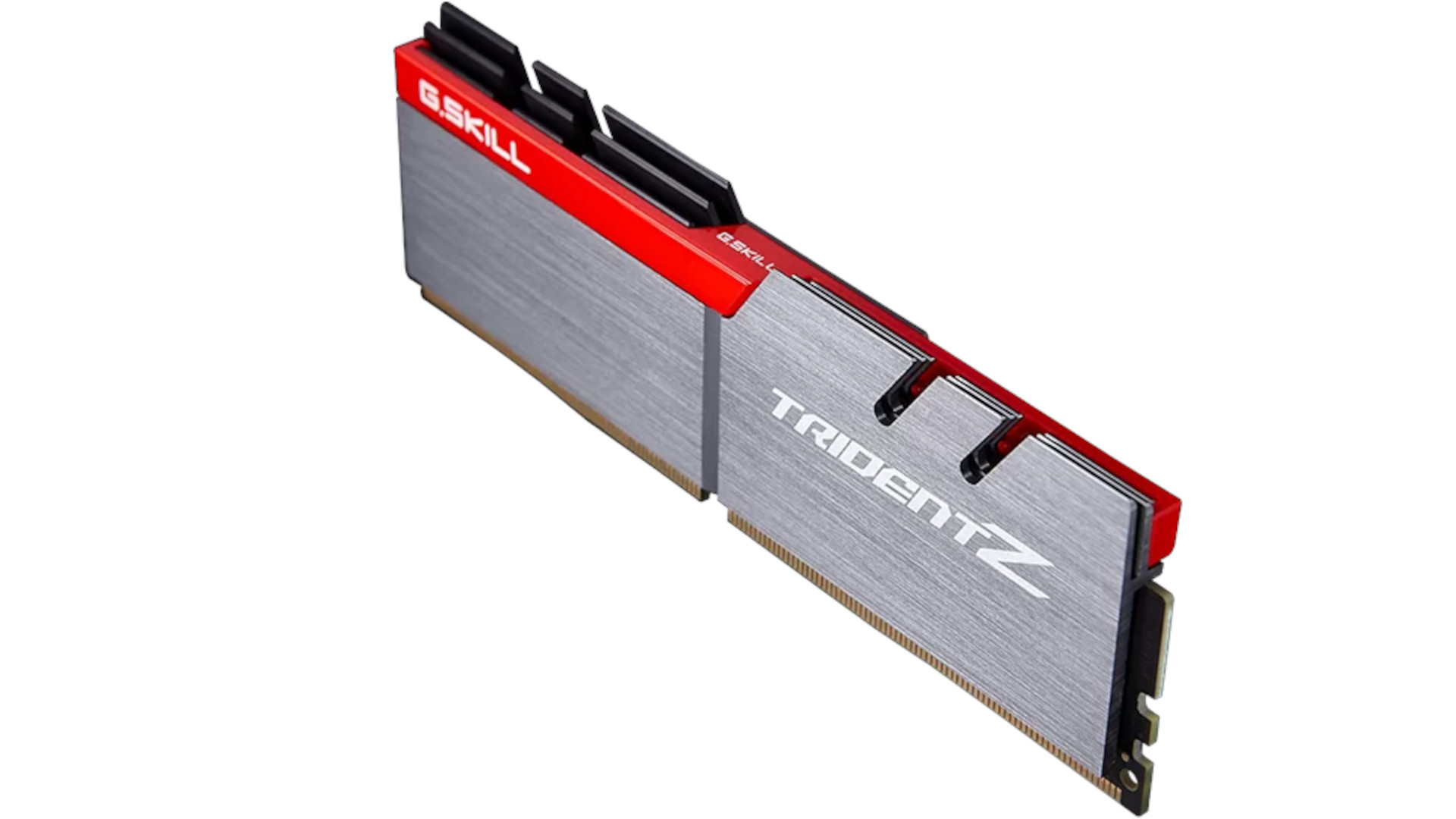I’ve never tried to hide my admiration for G.Skill. In all the years I’ve been interested in computers, G.Skill has distinguished itself as a business that genuinely wants to satisfy our requirements as enthusiasts by providing excellent memory products at a competitive price. Every single time, they just get it right. As a result, I get excited when G.Skill sends me a new product to check out, and I think you should too.
My personal perspective, though, doesn’t really matter. Performance, cost of performance, and various other aspects that could affect your purchasing decision are what really count.
When I received my new kit, a set of 64 GB 3200 MHz CAS14 Trident Z sticks, I knew exactly what I had to do; I took some images, performed some benchmarks, and am now prepared to share those with you. G.Skill does a nice job of making my job in that regard quite easy. So let’s get started!
Packaging & Unboxing of G.SKILL Trident Z DDR4 3200 C14 4x16GB
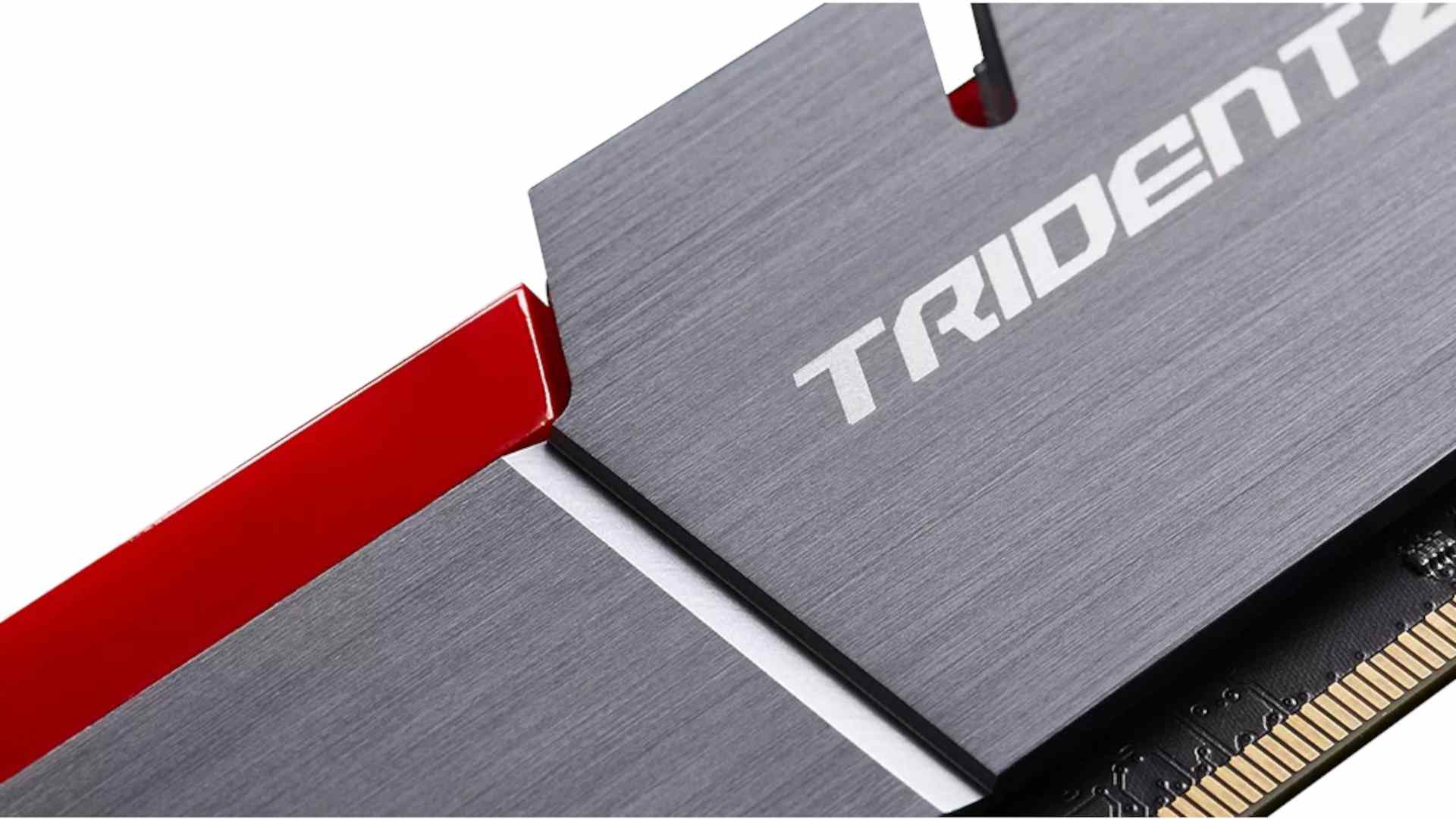
Brown boxes used to be the standard packaging for G.Skill’s high-end sticks, but those times are long gone, and G.Skill is now back to elegant packaging with equally lovely sticks concealed inside. I’ve already examined a number of G.Skill Trident Z sticks that resembled the sticks shown on this package.
The sticks are contained inside the box in various plastic trays with rather tight-fitting lids. When you remove the sticks from these trays, you’ll also discover a case badge that you may use to embellish your case.
You can now understand what G.Skill is aiming for with their second iteration with these improved Trident Z sticks out of the box and taken as a whole. We now have a heatspreader of one color and with white tops, designed to complement the numerous white/black motherboards on the market today, in place of red tops and dual-colored heatpsreaders. There are additionally additional color choices available.
The shape and overall style of the Trident Z stick remain the same, but it now has a white top and a dark gray metallic coating on the sides.
The Trident Z logo is on one side and the G.Skill logo is on the white plastic top, with the label for the DIMM underneath. Every important specification is listed on the label.
The G.Skill logo is printed on the white plastic bar across the top so that it can be proudly seen when the sticks are installed. Additionally, the top has many fins that collect airflow and aid in cooling the sticks during hot weather.
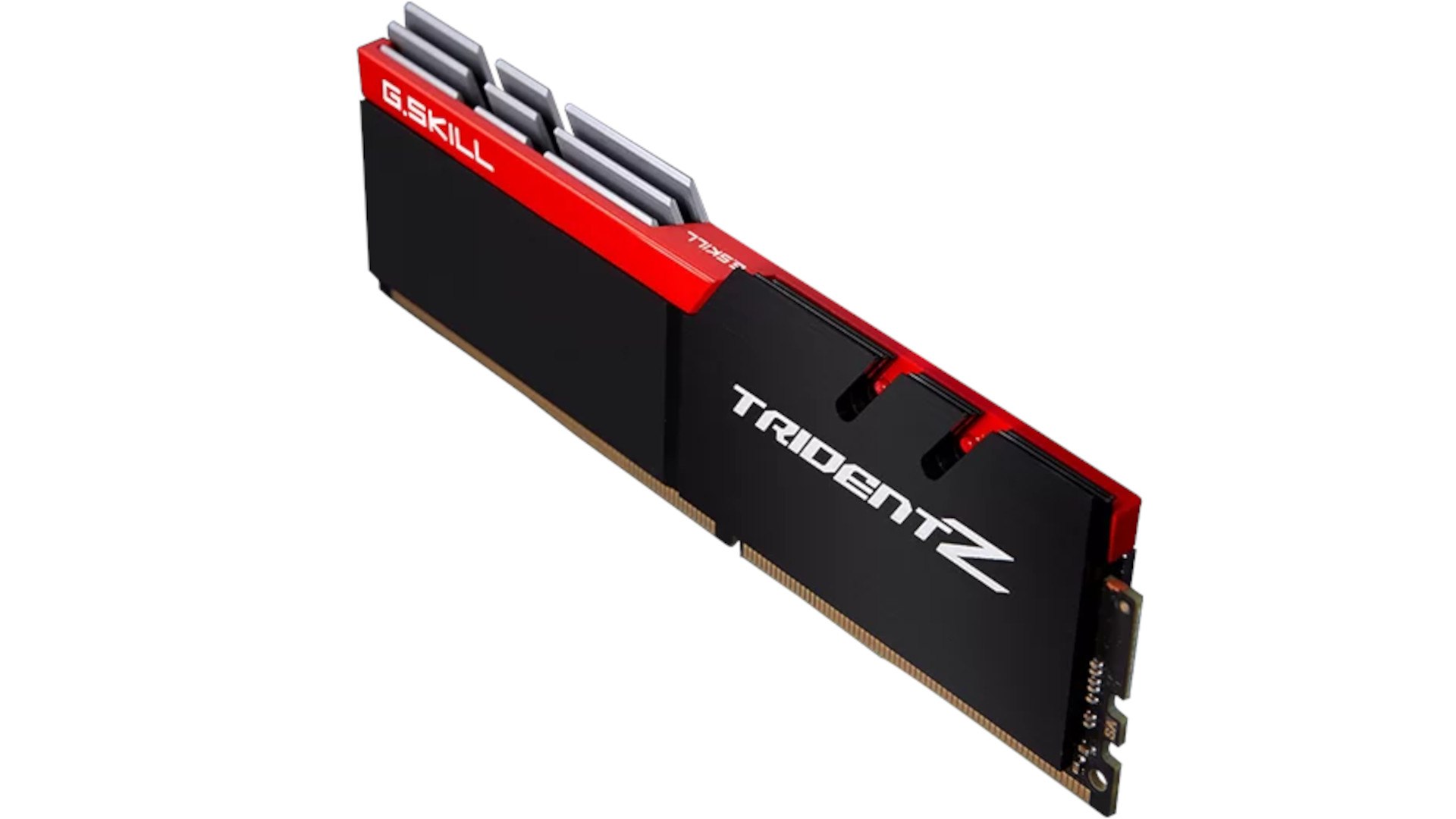
I searched the ends of the PCBs that protrude from beneath the heatspreaders, as is my habit, for any identifying marks. Here, I did uncover some useful information, such the build date.
The stick’s capacity and speed are also printed next to some golden “SB” letters, which is handy in case the heatspreaders need to be taken off for watercooling or the label wears off. I also observed the heatspreader’s thickness while gazing at both ends; it is fairly thick and each side interlocks with the other.
G.SKILL Trident Z DDR4 3200 C14 4x16GB Specs
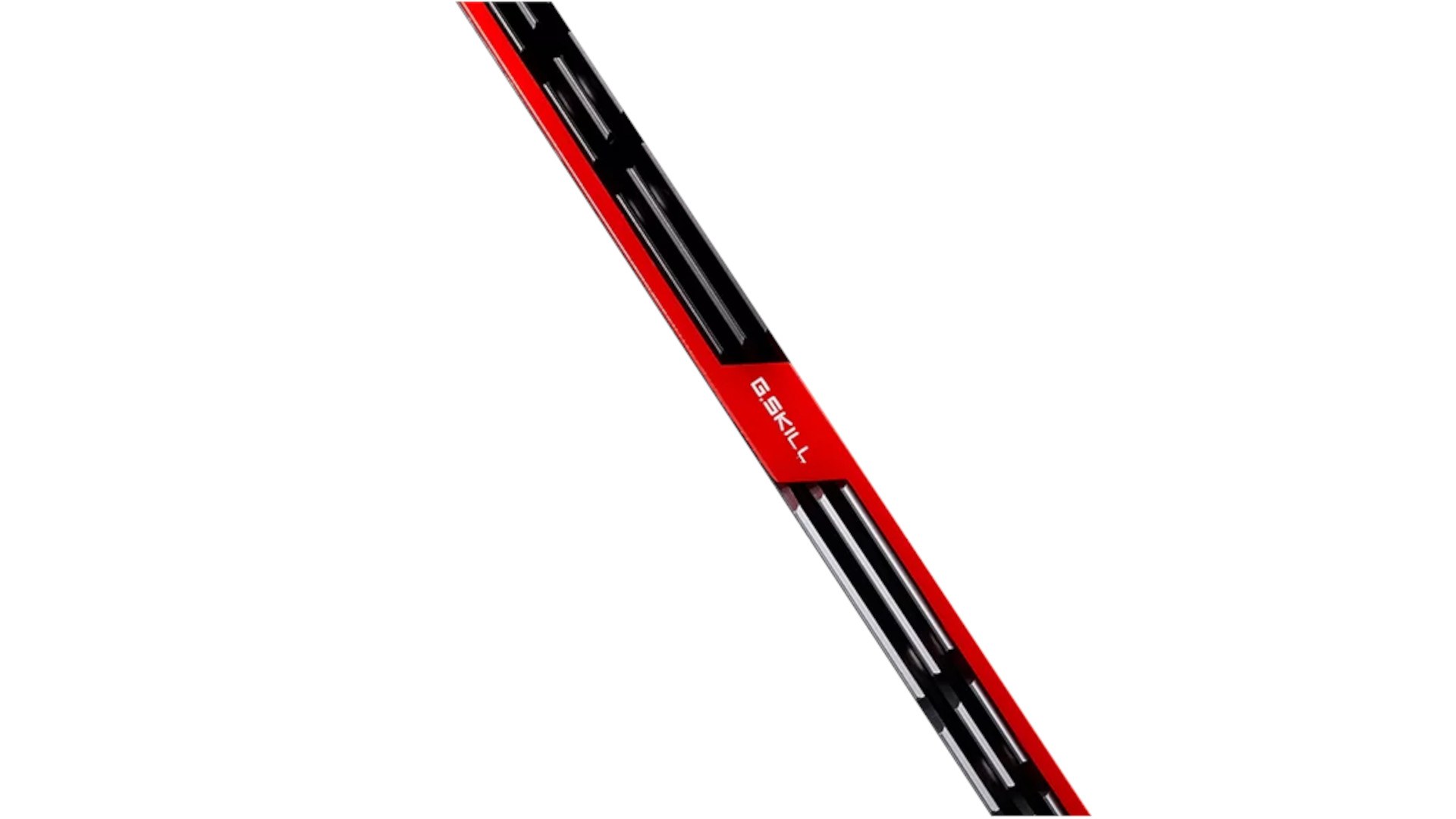
The top model in the TridentZ series actually runs at 3.733 MHz, but we’ll be good with the 3200 MHz CL16 kit and 1.35 volts of memory voltage for the 3200 MHz. We’ll try to verify G.Skill’s claim that the modules can attain a bandwidth of up to 25.6 GB per second.
DDR4 entry-level SKUs are rated at 2133 MHz, but frequently have improved access times and run at stock 1.2, which is also marginally slower. Price-wise, this 64GB kit is available for € 248, or €7,750 per GB. Each module has a brand-new heatspreader that uses Thermal Conductive Technology. In order for the memory and the board to run at the same temperature and deliver the optimal performance, the memory chips must be in touch with the heat sink. If supported, after installation, choose the XMP profile for the memory, then reboot, and you’re ready to go. It’s really that easy.
It’s not necessary for the distinctions between the G.SKILL Trident Z DDR4 3200 C14 4x16GB and rival samples to be blatantly obvious. After all, the identical recollection is offered in silver and white or black and crimson. By adding KW to the black and white set and SW to the silver and white set in the model number, G.Skill distinguishes between these colors. Customers should expect the black and red set even without those extra letters. The rest of the model name, with the Q standing for quad DIMMs, is fairly self-explanatory.
That implies the test candidate for today has the entire part number G.SKILL Trident Z DDR4 3200 C14 4x16GB, including the color code. As G.Skill appears to be waiting for a bit more press attention before launching the new color, you won’t find these at Newegg just yet. The company appears to be waiting for this review in particular.
This black and white kit is spec’d @ DDR4-3200 CAS 14-14-14-34 and uses XMP programming to enable its non-stock 1.35V, just like the colors you can already purchase. The majority of motherboards require you to enter firmware to activate this manufacturer-specified overclocking profile, while other motherboards allow you to activate XMP using a button or switch.
Motherboards will boot normally with the G.SKILL Trident Z DDR4 3200 C14 4x16GB kit running industry-standard DDR4-2133 CAS 15 timings before setting XMP mode. Although manual configuration may be possible on motherboards without XMP, most boards that support it also include XMP.
G.Skill requested that we update the outdated LGA 2011 hardware with one of Intel’s freshly released Broadwell-E CPUs since it is a quad-channel kit.
Why did you lead with your lowest test setting, bandwidth zealots will shout, yet latency zealots will understand: DDR4-2133 CAS 8 has the same real-time delay as DDR3-1600 CAS 6 since cycle time is inversely proportional to frequency. This indicates that DDR4 has finally surpassed the best latency performance that DDR3 could provide in at least one setup.
The advantage of the new Trident Z for adjusting latency remains at DDR4-2666 but declines at its rated DDR4-3200. Although tRAS was a little more forgiving, we were unable to lower any of the three major timings even a single cycle below their rated DDR4-3200 settings.
No feasible configurations will enable this CPU to sustain any of our memory samples at data rates greater than 3305 MHz. Extra-high System Agent voltage initially appeared to have the potential to support at least DDR4-3466, but only after raising CPU core voltage to levels that were thermally unsustainable. In other words, the voltage settings needed to increase the memory’s clock speed were effective only until the CPU became too hot.
G.SKILL Trident Z DDR4 3200 C14 4x16GB RAM Review
| MANUFACTURER: | G.Skill |
| SPEED RATING: | DDR4-3200 (PC4-25600) |
| RATED TIMINGS: | 14-14-14-34-2t |
| TESTED CAPACITY: | 64 GB (16 GB x4) |
| TESTED VOLTAGE: | 1.35 V |
| PCB TYPE: | 10-Layer |
| REGISTERED/UNBUFFERED: | Unbuffered |
| ERROR CHECKING: | Non-ECC |
| FORM FACTOR: | 288-pin UDIMM |
| WARRANTY: | Limited Lifetime |
| MODEL: | F4-3200C14Q-32GTZSW |
Final Thoughts on G.SKILL Trident Z DDR4 3200 C14 4x16GB
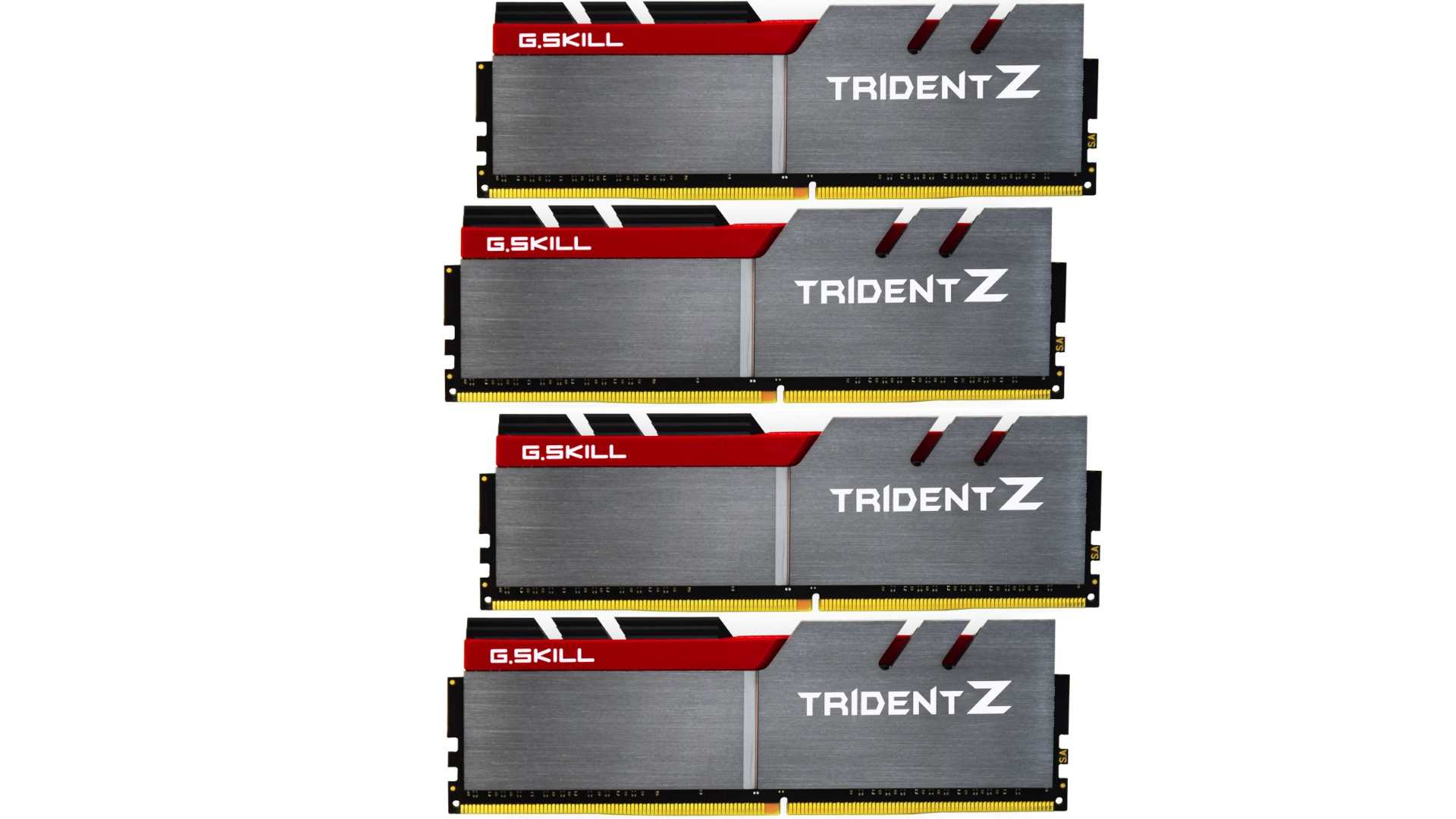
Navigating the world of sub-timings is challenging. What is happening is quite fundamental if you overclock memory in great detail, but if you don’t, you might not be aware of such things, and the benchmark results might, as a result, indicate something different from what is actually happening to you.
One of the factors that distinguishes companies that use the exact same memory chips and PCBs but provide different outcomes is sub-timings. They can affect performance in a way that is significantly more substantial than primary timings. A sophisticated set of factors that I’m sure many people do not take into account are sometimes determined by the memory stick’s SPD table and other times by the board itself.
Furthermore, places like retailers and memory makers don’t seem to be overly willing to freely give such information. This is a major factor in why it is not a good idea to combine kits from various sets or manufacturers, even if they first appear to be the same. Sub-timings can change from kit version to kit revision, not to mention that the actual memory chips themselves can change. Understanding what’s happening is NOT a task for a novice.
Having said that, the Trident Z series of sticks from G.Skill are designed to be hard-pushed and overclocked. To ensure that your themed or overclocked system has everything it needs, both in terms of appearance and overclocking potential, they have heavy heatsinks and available in a range of colors.
These sticks differ slightly from the Crucial DIMMs that we previously examined because they are meant for people who want great performance they can “set and forget.” Few sticks can match to G.Skill’s Trident Z sticks in terms of being designed for individuals who want to push the envelope and are ready to spend time adjusting settings and voltages to get the best results.
They also cost slightly more as a result. However, manual tweaking may be required if you want to get the most out of these sticks. Need assistance setting up the kit you just purchased? Please tell me in the forums!
Is G.SKILL Trident Z DDR4 3200 C14 4x16GB RAM good?
Some of the most aesthetically pleasing RAM is produced by G.SKILL. Just take a look at the Trident Z Royal series, which features silver and gold plating and is really nicely crafted. A little more reasonably priced line of RAM modules with an attractive shape and RGB lighting effects is the Trident Z Neo. We tested them out to see whether you should take them into consideration because they are also quite quick on paper.
A high-performance memory kit is what the G.SKILL Trident Z DDR4 3200 C14 4x16GB RAM is regarded as. Its 3200MHz speed and 14 CAS delay suggest quick data transmission and low latency. G.SKILL’s Trident Z series is renowned for its outstanding performance and dependability.
The overall RAM capacity of 64GB, which is provided by a combination of 4x16GB RAM modules, is rather significant and suited for demanding applications like video editing, 3D rendering, and gaming. In systems that enable it, the quad-channel design can also provide increased memory bandwidth.
When used with compatible computers, the quad-channel topology can also increase memory bandwidth.
Speed: The DDR4 RAM module’s operating frequency of 3200 MHz is regarded as a high speed. This makes it possible for quicker data transfer rates, which may enhance system performance as a whole.
Low CAS Latency: According to the C14 latency definition, the time it takes for the RAM to react to a system instruction is measured in clock cycles. Response times are accelerated via decreased CAS latency. Since C14 has a short latency, it performs well when dealing with memory-intensive activities.
Capacity: The kit has a total capacity of 64GB and is made up of four 16GB modules. This is a sizable quantity of memory that is appropriate for demanding activities like content production, video editing, and gaming that need the simultaneous processing of enormous amounts of data.
Trident Z Series: The Trident Z series from G.SKILL is renowned for its streamlined appearance and premium construction. The modules have fashionable heatspreaders with RGB lighting that you can configure with suitable software to fit the aesthetics of your system.
Overall, the G.SKILL Trident Z DDR4 3200 C14 4x16GB RAM is a premium memory kit with great performance that can deliver outstanding performance for memory-intensive applications like gaming and content development.
Is G.SKILL Trident Z DDR4 3200 C14 4x16GB RAM good for gaming?
There is no doubt that the G.SKILL Trident Z DDR4 3200 C14 4x16GB RAM is a superb choice for gaming. A good gaming experience may be enhanced by having enough and quick memory, even if the performance of the GPU (graphics processing unit) and CPU (central processing unit) is what matters most in gaming. These factors make the Trident Z RAM kit appropriate for gaming:
Data transfer between the memory and the CPU may happen more quickly thanks to the RAM’s DDR4 3200 MHz speed. As a consequence, demanding games may load more quickly, play more fluidly, and have less latency or stuttering.
Low CAS Latency: The RAM’s reaction time to commands is described by the C14 latency specification. The RAM can access data more quickly the lower the CAS latency. A decreased latency can reduce delays and improve the overall responsiveness of the system while gaming.
Size: This RAM kit has a total capacity of 64GB (four 16GB modules), which offers enough of memory for gaming. Even though the majority of contemporary games don’t need this much RAM, having more memory can help you multitask, conduct background tasks, and future-proof your machine.
G.SKILL Trident Z RAM modules are renowned for their exceptional build quality and dependability. They also have the potential to be overclocked. Additionally, if you’re into sophisticated tuning and optimization, they frequently offer strong overclocking capability, letting you to push the RAM beyond its listed specs for even greater performance.
A fast and sufficient amount of RAM, such as the G.SKILL Trident Z DDR4 3200 C14 4x16GB RAM, can undoubtedly help with smoother gameplay, shorter load times, and overall system responsiveness during gaming sessions, even though RAM alone may not significantly improve gaming performance compared to other components like the GPU and CPU.
Can you overclock G.SKILL Trident Z DDR4 3200 C14 4x16GB RAM?
You may overclock the G.SKILL Trident Z DDR4 3200 C14 4x16GB RAM, yes. Any RAM module’s ability to be overclocked is influenced by a number of variables, including as the exact memory kit, the motherboard’s capabilities, and the stability of your system.
Extreme Memory Profile (XMP): The G.SKILL Trident Z series frequently comes with a preset XMP (Extreme Memory Profile) that enables simple overclocking. By changing a single BIOS parameter, you may enable a higher frequency or tighter timings. To verify if XMP profiles are offered for your particular RAM kit, check the product literature or G.SKILL’s website.
Check that your motherboard is compatible with the intended overclocking frequencies and has the proper BIOS options for changing RAM settings. For information on overclocking RAM, visit the manufacturer’s website or the manual that came with your motherboard.
Is G.SKILL Trident Z DDR4 3200 C14 4x16GB RAM Compatible with Ryzen?
Yes, Ryzen CPUs are compatible with the G.SKILL Trident Z DDR4 3200 C14 4x16GB RAM. The Ryzen CPUs are made to function well with fast DDR4 memory, notably those in the Ryzen 3000 series and later.
With its DDR4 3200 MHz frequency and CL14 latency, the Trident Z RAM kit you indicated is a fantastic fit for Ryzen CPUs. Faster memory rates are advantageous for Ryzen CPUs, and DDR4 3200 MHz is frequently suggested for best performance.
Check the motherboard’s Qualified Vendor List (QVL) or specs to determine whether the exact G.SKILL Trident Z RAM kit is listed as compatible to assure compatibility. This contributes to the assurance that the RAM modules have been examined and found to be compatible with the motherboard.
In principle, the G.SKILL Trident Z DDR4 3200 C14 4x16GB RAM should work with Ryzen CPUs as long as your motherboard supports DDR4 memory and has the required amount of RAM slots available.
Is G.SKILL Trident Z DDR4 3200 C14 4x16GB RAM Compatible with Intel?
Yes, Intel processors are compatible with the G.SKILL Trident Z DDR4 3200 C14 4x16GB RAM. A variety of platforms, including those based on Intel, are compatible with the Trident Z RAM family.
The Trident Z RAM kit’s DDR4 3200 MHz speed and CL14 latency make them compatible with Intel CPUs. In some applications, faster RAM can improve performance, and DDR4 3200 MHz is a quick and frequently suggested speed.
G.SKILL Trident Z DDR4 3200 C14 4x16GB RAM
-
Performance - 98%98%
-
Price - 98%98%
-
Value - 98%98%

